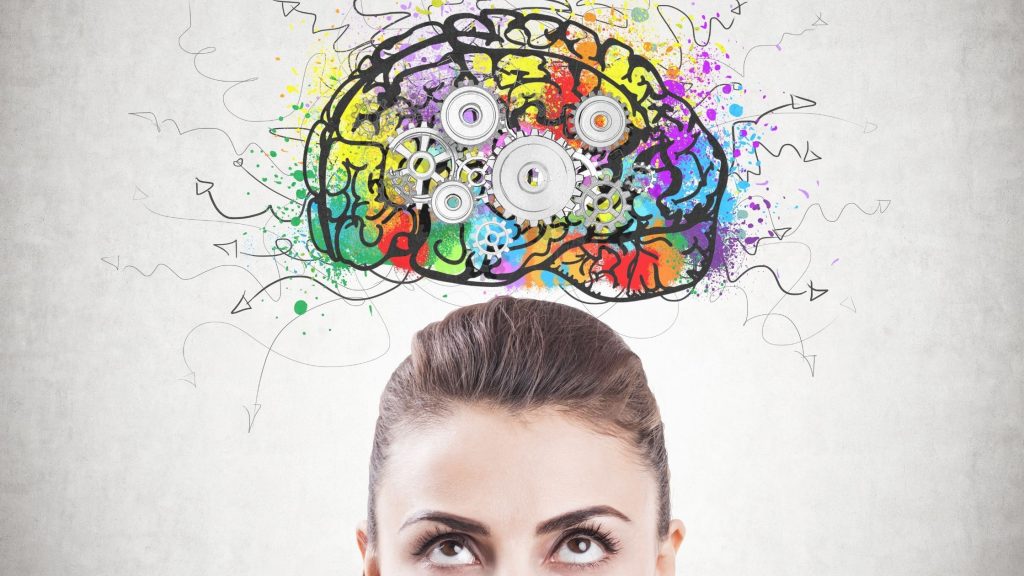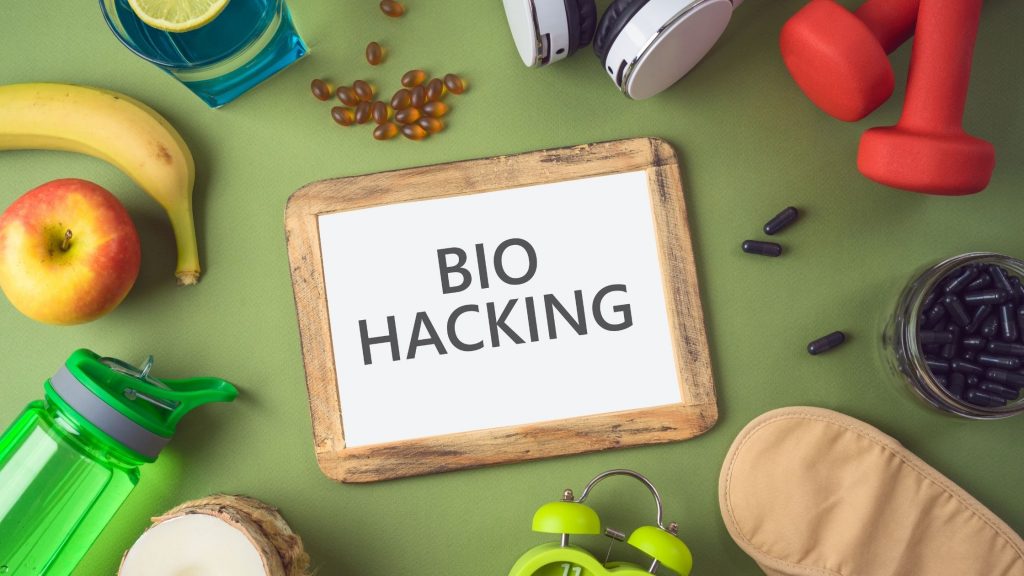Stress relief activities are essential for our survival.
With all that’s going on in the world, managing our stress levels should be considered as a priority.
As a Biohacking pioneer in the Philippines, my advocacy is to help you deal with stress better.
So today, we will be discussing stress, stress relief activities, and how biohacking can help you with stress relief.

Understanding Stress
Stress is your body’s way of responding to threats or demands that will harm or destroy you.
As time went by, our bodies have developed ways to adapt to the environment we’re in.
Back when humans were nomadic, our ancestors’ minds and bodies evolved to meet our needs as hunters and gatherers.
They developed heightened responses to warning signs indicating the presence of danger or predators in the area.
Harvard Health talks about this in detail in an article discussing the chronic activation of stress response.
Our survival mechanism, also known as the “fight-or-flight response”, enabled us to react to life-threatening situations quickly and effectively.
This response is the result of an instantaneous hormonal change and physiological action we take. And it all starts in your body’s command center: the brain.
When our senses detect danger, it sounds an alarm inside our brain, specifically the hypothalamus.
This alarm is set off by the amygdala, the part of the brain that contributes to emotional processing.
Once this stress signal is sent, the hypothalamus goes to work.
It communicates through the autonomic nervous system that controls the body’s involuntary functions. These include your heartbeat, breathing, and even the dilation of your body’s key veins and vessels.

The hypothalamus also activates the adrenal glands to release epinephrine, triggering numerous physiological changes in the body.
Heart rates increase, your muscles receive more oxygen and blood, and you breathe more rapidly than normal.
The lungs expand to accommodate more oxygen and help the brain receive more oxygen to stay alert.
These changes happen so fast that you aren’t even aware that it’s already happening.
And it was designed this way so you could focus on surviving.
Stress and Evolution
As humans thrived, we developed new ways to increase our survival.
Nomadism was lessened because we learned how to grow food and farm. We also learned how to build stronger shelters that kept us safe from predators and the forces of nature.
Because of this, our survival rates surged to new heights.
But as we built civilizations and new technology, stress levels and anxiety became more prevalent.

We no longer worried much about predators. Instead, our worries and anxieties came from other sources.
The industrial revolution, societal pressures, and financial woes started to plague the modern man. And as time passed, scientists and psychologists alike began to study stress and how humans responded to it.
In the 1920s, Hans Selye started observing patients suffering from different diseases. He noticed that most of the patients had identical physiological signs and symptoms.
Later, he discovered General Adaptation Syndrome, a response that the body makes during high-demand situations.
Seyle discussed how this syndrome induced hormonal automatic responses.
Over time, these hormonal changes resulted in certain diseases like ulcers, high blood pressure, arthritis, kidney disease, arteriosclerosis, and even allergic reactions.
After completing his medical training at the University of Montreal, he began using the term stress to identify this syndrome.
General Adaptation Syndrome had three stages:
Stage 1 – Alarm reaction
This stage talks about our immediate response to a stressor. In common terms, this stage is shock.
Humans exhibit a ‘fight-or-flight’ response, taking away energy from other body systems. It also increases our bodies’ production of adrenaline to prepare for our response.
Stage 2 – Resistance
Once the initial shock wears away, the body begins to repair itself.
Our bodies release cortisol which normalizes your heart rate and blood pressure.
This still leaves the body in a high alert state. The good thing is, the body will continue to repair itself until it goes back to the pre-stress state.
But if the stressful situations continue, the body will continue to release stress hormones.
This long term exposure to stress can lead to exhaustion if not managed properly.
Physical signs of stress resistance include irritability, frustration, and poor concentration.
Stage 3 – Exhaustion
This is the result of chronic stress.
When you struggle with long periods of stress, it drains your physical, emotional, and mental resources.
This is the stage where you feel burned out and fatigued all of the time.
Your stress tolerance also decreases. You feel anxious and uneasy, and your body can also experience a weakened immune system.
This can lead to stress-related diseases like heart disease, obesity, depression, mental health issues, and even death.
[ Read more about Hans Selye and his studies about stress here: https://www.stress.org/about/hans-selye-birth-of-stress]
Stress and its Main Causes
The modern man has been exposed to so many stressors. So much so that stress has become a part of everyday life.
Most of us have adapted to the stresses of life in our own way. But there are still some stressors that affect even the best of us.
There are two types of stressors that trigger our responses.

First are external stressors caused by people and situations around us. These can come from relationships, financial problems, and even overwhelming tasks assigned to us.
Internal stressors come from the struggles we face as an individual.
These can include personal expectations, trauma, or negative self-talk.
According to Elizabeth Scott, here are some of the main causes of stress :
Financial Problems – Most people have problems when it comes to money. And this results in long term distress leading to health problems.
Work. This could be because we worry about a task or project. It could also be because of harmful work relationships.
Personal Relationships. Even within our relationships, some people cause us stress. Toxic people can ruin and add stress to life.
Parenting. It’s no doubt that it’s hard being a parent. Aside from taking care of the family, they also have to manage busy schedules.
Daily Life and Being Busy. There are also day-to-day stresses caused by inconveniences. This can be minor. But when experienced longer, it becomes destructive.
How do you relieve stress and anxiety?
There are different organizations that have dedicated themselves to understanding how we can manage stress better and live healthier lives.
The Anxiety and Depression Association of America is one of them.
ADAA is an international non-profit organization dedicated to prevent, treat, and cure anxiety, depression, OCD, PTSD, and other disorders.
Their goal also includes providing materials and educational resources for those who are suffering from stress and other symptoms.
And while the internet is a great source of information, it also has a lot of misconceptions about stress and anxiety.
ADAA also gives out the right information about stress and anxiety-related illnesses, including panic attacks, phobias, and other anxiety disorders.
Check out the infographic below for myths and misconceptions about stress management.
Tips on managing stress better
ADAA also recommends a few ways to cope with stress.
Here are a few things you can do when you feel anxious or stressed.
- Get enough sleep to help your body and mind
- Learn to let go and accept that things won’t always go your way.
- Welcome humor and laugh.
- Be aware of your triggers and stressors
- Take a breather.
- Talk to someone when you feel stress and anxiety creeping in.
Talking to someone helps you lighten the load even for a little.
A friend, a coach, or a professional can recommend additional ways you can manage and thrive despite the stress.
And one of the ways to do so is through biohacking.
How Biohacking Works With Stress

Biohacking is the art and science of optimizing your well-being and performance. It’s done by measuring, tracking, and optimizing a person’s biology. It helps us achieve the best versions of ourselves. In the end, it leads us to this phrase.
Mens sana in corpore sano.
Biohacking can help stress relief by reshaping our biology, minimizing the potential harm from stress, and making us more flexible and adaptable to change.
We need to keep in mind that stress isn’t always a bad thing.
For one, the right kind of stress can cause us to move forward. Positive reinforcement and pressure can push us to our boundaries so we could reach our full potential.
Eustress or positive stress helps us stay motivated to work on our goals and feel good about life.
Read more about eustress here: https://www.healthline.com/health/eustress#eustress-vs-distress
Now the question is, how does biohacking help stress management?
Biohacking for stress resilience talks about how you can optimize your body’s performance to manage your response.
You need to focus on optimal functioning.
Health is not only about the absence of disease. It’s also about hitting your best health.
For now, you might think you’re good because you don’t feel sick. But in truth, your stress issues may be related to health concerns you’re not addressing.
Risk factors like weight management and sleep can also contribute to your stress levels. This might also cause you to feel groggy or tired and affect your performance.
You also need to focus on addressing your concerns and not suppressing them.
Most mainstream medications only relieve symptoms but fail to cure the disease. It also helps us get hooked on medicine and become dependent on them.
If you’re feeling pain, like headaches or palpitation, it helps to find out what the cause is. Once you do, it becomes easier to address and resolve.
It also helps to consider multiple causal factors that affect your optimal functioning.
Physiological factors such as poor posture, improper breathing, nutrient deficiencies, and poor sleep quality can cause stress.
When you figure this out, it will be easier to address using supplements and other strategies to regulate better.
5 Stress Relief Activities and Biohacking Techniques
I’d like to change your mind about biohacking before you think it’s too difficult. It’s not as complicated as you think.
In fact, you might already be doing some of these stress relief activities.
So here are some stress relief hacks you can do to help you manage your stress levels better.
Mindfulness

Meditation, breathing exercises, reflection, and prayer.
These are some of the oldest practices of mindfulness that we’ve been doing for so long.
Mindfulness allows you to reach inner stillness. It also helps you increase creativity, take control of your stress and anxiety, and even increase your overall mood and happiness level.
Research shows that meditation affects the amygdala and helps you take control of your emotions.
The more you practice it, the better you take control of your stress levels.
Aromatherapy

Essential oils can have a huge impact on calming our nerves, lessening stress, and helping control our anxieties.
Studies show that oils such as lavender, bergamot, lemon, and lemongrass have greatly improved people’s focus and mood.
Oils like neroli have shown improvements in blood pressure. It was also used as a sedative for menopausal women and helped decrease painful symptoms of PMS.
Aromatherapy was also used to help relieve nausea and promote relaxation in some cancer patients in the UK.
Check out more details about aromatherapy here: https://www.verywellmind.com/essential-oils-to-help-ease-stress-89636
Breathwork

Breathing is an automated response we all do.
But believe it or not, most people don’t know how to breathe properly. This affects the amount of oxygen that enters our body and can also affect our performance as well.
Author, Cardiologist, and founder of Harvard’s Mind/Body Medical Institute, Dr. Herbert Benson, coined the term “Relaxation Response”.
His theory states that breathing can be an effective treatment for a wide array of stress-related disorders.
As you breathe, the body releases chemicals and brain signals that make the organs slow down. It also increases blood flow to the brain.
The Relaxation Response is the body’s way to turn off the fight-or-flight triggers and go back to pre-stress levels.
It also shows that regular practice can reduce the risk of insomnia, hypertension, anxiety disorders.
You can read more about it here: https://www.psychologytoday.com/us/blog/heart-and-soul-healing/201303/dr-herbert-benson-s-relaxation-response
Autonomous Sensory Meridian Response (ASMR).
Most people would automatically think of Youtube eating videos when they hear about ASMR.
But really, it’s more than that.
Autonomous Sensory Meridian Response describes a tingling sensation we feel in the crown of the head when exposed to certain audiovisual triggers.
These triggers can include tapping, repetitive sounds, whispering, or even scratching.
Most people report feeling relaxed and chilled, even experiencing tingling sensation on their head, neck, and back.
Research also shows that ASMR works differently for people. Some experience it more intensely than others.
ASMR videos can range from food videos, scalp scratching, and even natural sounds like rain.
Here’s a video that I play to help me fall asleep faster.
EFT Tapping

Sometimes the best way to resolve stress is to face its roots. And one way to do that is through the Emotional Freedom Technique or tapping.
EFT is an alternative treatment for physical pain and emotional distress. It is also commonly known as psychological acupressure.
This is also among the best stress relief activities you can do on your own.
Like acupressure, EFT focuses on the body’s meridian points or energy hotspots. By tapping on these pressure points, you help your body restore its energy balance.
Tapping stimulates these points and helps relieve stress and negative emotions you might have because of trauma or stress.
Read more about the benefits of tapping and EFT here: https://www.unltd.ph/eft/
Conclusion
Stress is a part of daily life. But it doesn’t mean we have to suffer because of it.
That’s why it’s necessary for you to engage in stress relief activities so you could be at your peak performance.
Get more biohacking tips and techniques straight to your inbox. Subscribe to our email list here.
What stress relief activities work best for you? Share it with us below.





